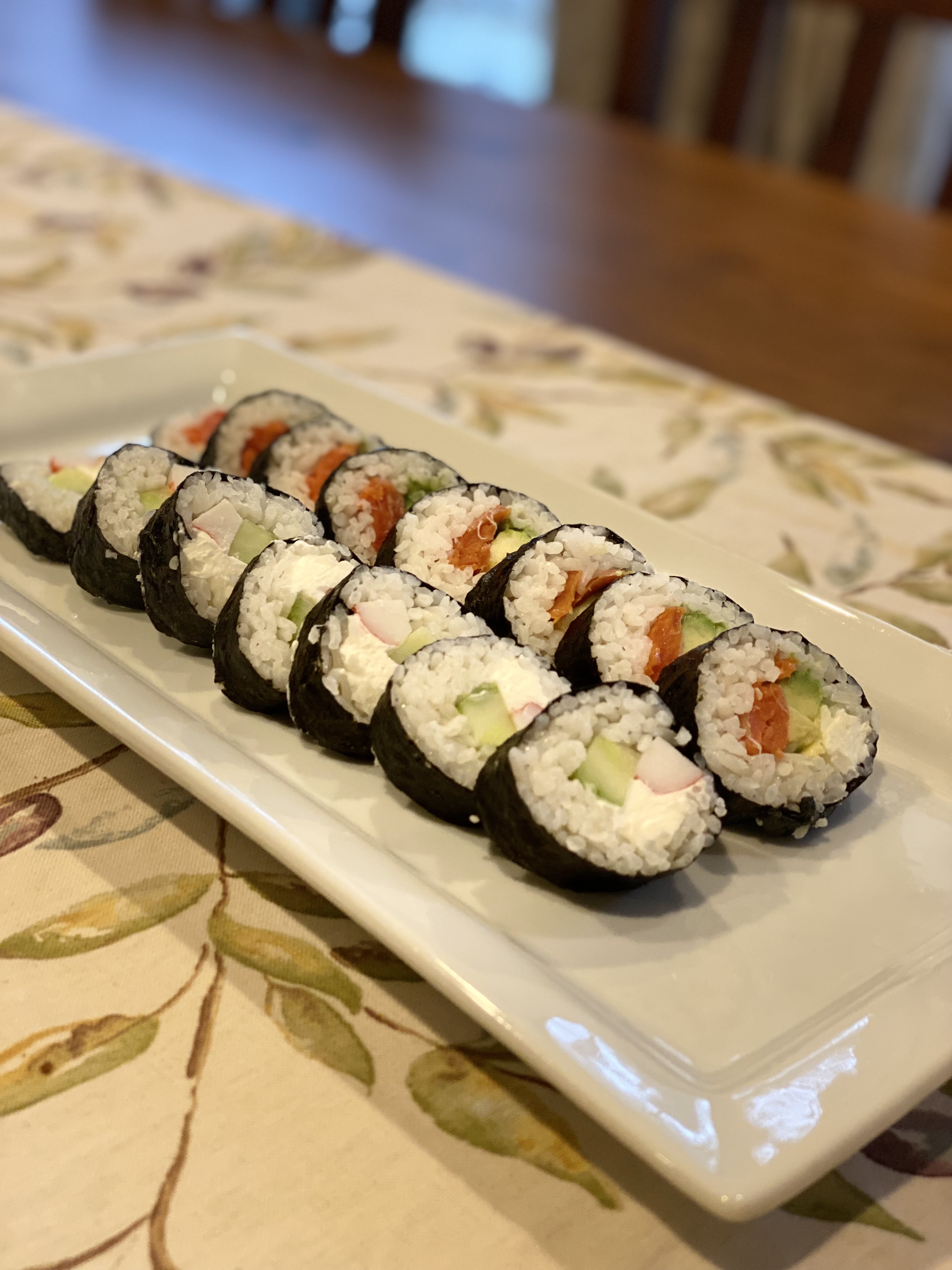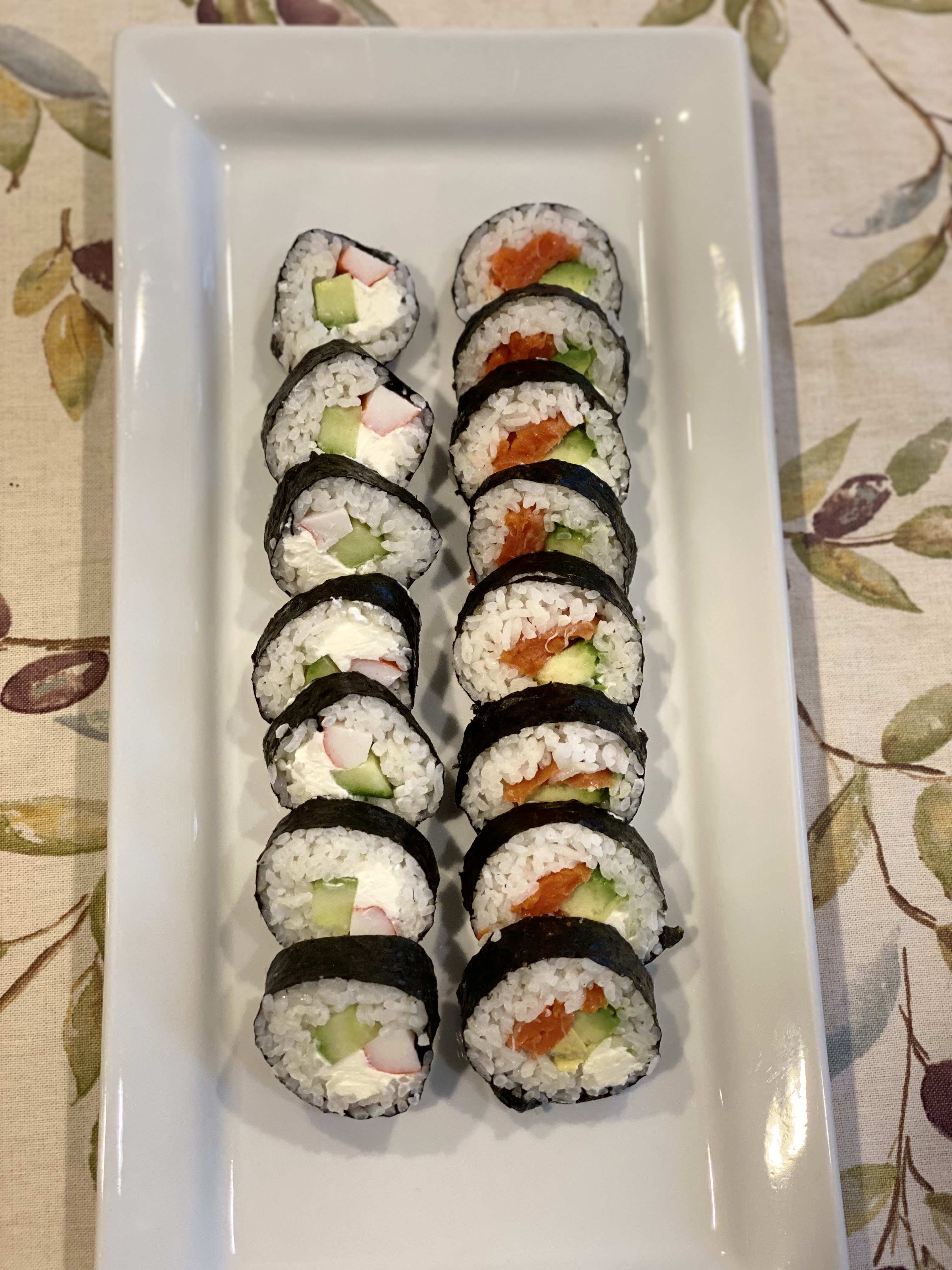Assembling Sushi
Learning Objective Four
Through my time in philosophy, I was introduced to Eastern philosophy. Major countries in this realm are Japan and China. Sushi, one of my favorite foods (especially sashimi), also come from these countries. In an attempt to explore the culture of these two regions.
I'm not much of a cook. Luckily, preparing and rolling sushi doesn't require any "cooking" skills, just some careful planning and attention to detail. First things first, an essential part of making sushi is a sushi roller, or "makisu". It is a mat of bamboo and string that is used to roll and shape the sushi. Secondly, through some research, I learned that sushi rice isn't just normal cooked white rice. You need sushi rice, along with sushi vinegar. After cooking rice, you need to mix in the vinegar into the sushi little by little in order for every single grain of rice to be flavored. Lastly, sheets of seaweed are required for a sushi roll to be complete. To my surprise, you can order packs of 50 full sheets from Amazon for less than $15. I will lay this on the bamboo mat and cover it with a thin layer of the vinegar rice. This is the primary preparation that is required for a simple circular roll.
I wasn't aiming for a fancy roll. I wanted to make something simple: closer to traditional sushi. This led me to an incredibly simple roll that I often get at a new sushi restaurent to gauge their menu: the philadelphia roll. It is a simple roll that usually has cream cheese, avocado, and salmon. For my use, I opted to utilize smoked salmon for my rolls due its preservation and a small likehood of disease from fresh fish. Additionally, there was strips of crab for sale at my local grocery store, and I purchased a pack along with cucumber to mix up the ingrediant list a little bit.
The first few tries were, to say the least, pretty terrible. Seaweed fell off the rice because there wasn't enough water applied, giving it a non-sticky surface. Rice crumbled away and the ingrediants fell off the roll. However, after the third roll, I had the technique down. I wasn't overrolling the sushi, and everything stuck together nicely. Now, after the rice is layed down with a rice covering, the roll ingrediants stacked up in the middle, and the rice is rolled up into one nice roll, you have to cut it into the well known pieces of sushi. Your tool: a knife. Well, a wet knife. Water prevents the seaweed and rice from sticking to the knife and creating resistance. I struggled to cut it originally because the seaweed would tear off, but the more I made the rolls the more I realized that I needed to cut slowly and with the part of the blade closest to the handle for the sharpest edge to cut through.
The sushi rolls were made, and I was extremely proud of my accomplishment. The most complex dish I've made was pasta, and something that I thought would be difficult turned out to be relatively easy. Even better, I connected to a new culture, especially one that isn't close to the western identity that I'm exposed to all year.

Philadelphia Rolls
Sushi rolls made from crab or salmon, avocado or cucumber, and cream cheese.

More Philadelphia Rolls
Sushi rolls made from crab or salmon, avocado or cucumber, and cream cheese.